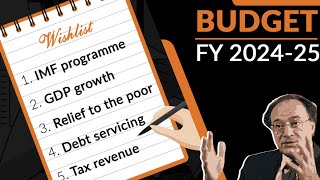On Thursday, April 22, 2004, nearly 90 million thirsty people of Pakistan went to bed without getting a glass of clean potable water. What the remaining 50 million people could get was no better.
On this occasion of Earth Day - One Earth One People - there were seminars and symposia to take stock of the efforts that were made since April 22, 2003 to improve the condition of earth and living conditions of the people who largely depend on public sector intervention for improvement in their lives.
Discussion on water quality and its scarcity dominated most of the programmes where environmental scientists and academics showed their concern on the depletion of potable water reserves and apathy towards conservation practices. At the same time fears were expressed on the increase of saline water in and around sweet water sources.
The saline water is another "monster" that has endangered water sources and calls for its control. It is damaging fertile land, destroying sweet water sources and adversely affecting ecology where it exists. The experts are of the opinion that the problem of salinity and water-logging, if left unattended, would assume an atrocious proportion and affect the rural population from all directions. Fertilizer off-take during Rabi FY04 increased by 10.6 percent to 3.1 million tonnes from 2.9 million tonens in FY03 is another matter of concern. On the one hand the excessive use of fertilizer has made the agricultural land fertilizer-dependent and on the other these different varieties of fertilizer are health hazards. When combined with saline water the fertilizer gets concentrated and becomes more harmful to the land than it is without fertilizer.
In the first place the saline water having fertilizer in concentrated form will affect the fertility of land, reduce availability of sweet water and destroy the ecology of the rural areas that sustain lives in the urban areas. It will then destroy rural flora and fauna that serve as natural deterrent against many health-related problems.
The rural areas are deficient in health services and children and women die for want of proper medical care. Most of the illnesses are environment related, as there is neither cleanliness in the rural areas nor an effective local government system to provide proper drainage of domestic liquid waste. In addition, the solid waste accumulates in almost all the villages and serves as breading grounds for mosquitoes, flies and deadly bactria that mostly kill children. The burning of the fossil fuel is another matter of concern.
There is no statistical data on garbage, solid and liquid waste, hospital waste, industrial waste, deforestation and depletion of water resources in respect of rural areas and some of the towns. In the absence of this information to guess where Pakistan would be standing next year when the Earth Day is again observed on April 22, 2005, seems difficult. But just one figure relating to Karachi where more than 8,000 tonnes of domestic liquid waste accumulates each day and does not find proper disposal arrangement should be an eye opener for the city fathers.
The theme of the Earth day is one Earth one People. The events on the day, observed since April 22, 1970 when about 20 million Americans had held a rally, focuses on concerns about what is happening to the universe -land, rivers, lakes and air etc.
BR100
7,583
Increased By
39.5 (0.52%)
BR30
24,238
Increased By
202.6 (0.84%)
KSE100
72,797
Increased By
207.9 (0.29%)
KSE30
23,213
Increased By
76.4 (0.33%)






















Comments
Comments are closed.